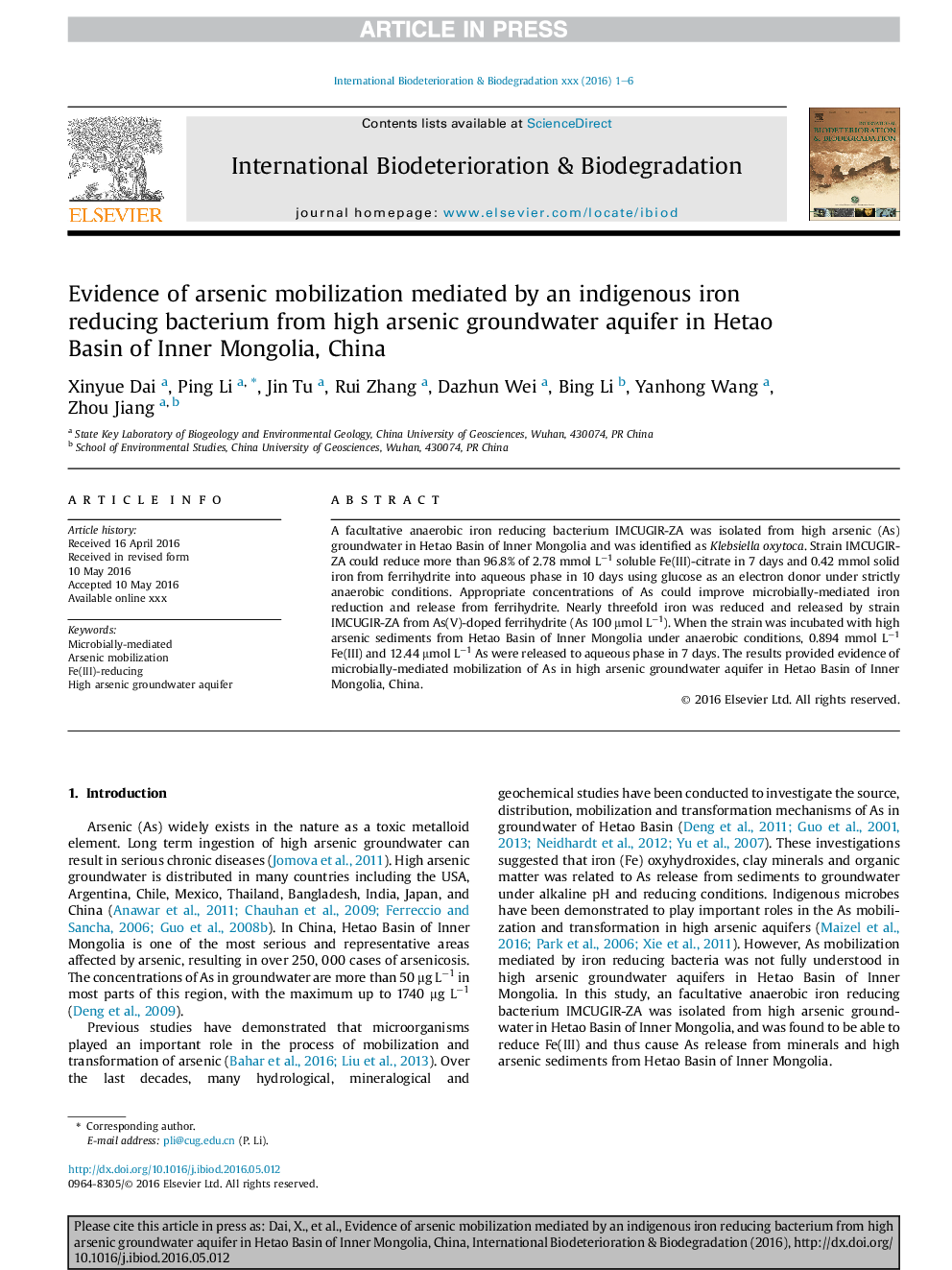| Article ID | Journal | Published Year | Pages | File Type |
|---|---|---|---|---|
| 8843879 | International Biodeterioration & Biodegradation | 2018 | 6 Pages |
Abstract
A facultative anaerobic iron reducing bacterium IMCUGIR-ZA was isolated from high arsenic (As) groundwater in Hetao Basin of Inner Mongolia and was identified as Klebsiella oxytoca. Strain IMCUGIR-ZA could reduce more than 96.8% of 2.78 mmol Lâ1 soluble Fe(III)-citrate in 7 days and 0.42 mmol solid iron from ferrihydrite into aqueous phase in 10 days using glucose as an electron donor under strictly anaerobic conditions. Appropriate concentrations of As could improve microbially-mediated iron reduction and release from ferrihydrite. Nearly threefold iron was reduced and released by strain IMCUGIR-ZA from As(V)-doped ferrihydrite (As 100 μmol Lâ1). When the strain was incubated with high arsenic sediments from Hetao Basin of Inner Mongolia under anaerobic conditions, 0.894 mmol Lâ1 Fe(III) and 12.44 μmol Lâ1 As were released to aqueous phase in 7 days. The results provided evidence of microbially-mediated mobilization of As in high arsenic groundwater aquifer in Hetao Basin of Inner Mongolia, China.
Keywords
Related Topics
Life Sciences
Environmental Science
Environmental Science (General)
Authors
Xinyue Dai, Ping Li, Jin Tu, Rui Zhang, Dazhun Wei, Bing Li, Yanhong Wang, Zhou Jiang,
